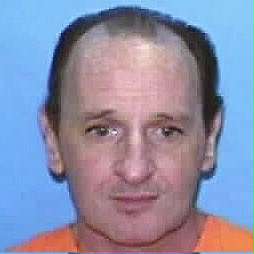
1949 - 2000
Thomas Harrison Provenzano
Summary
Name:
Years Active:
1984Birth:
June 06, 1949Status:
ExecutedClass:
MurdererVictims:
3Method:
ShootingDeath:
June 21, 2000Nationality:
USA
1949 - 2000
Thomas Harrison Provenzano
Summary: Murderer
Name:
Thomas Harrison ProvenzanoStatus:
ExecutedVictims:
3Method:
ShootingNationality:
USABirth:
June 06, 1949Death:
June 21, 2000Years Active:
1984bio
Thomas Harrison Provenzano was born around 1950 in the United States. Little is known about his early family background, but by adulthood, he had trained and worked as an electrician in Florida. Known to friends and neighbors as an introverted and sometimes erratic man, Provenzano began showing signs of deep psychological instability in his thirties. By 1984, he was an unemployed electrician living in Orlando, struggling financially and mentally.
Prior to the shootings, Provenzano had been arrested for disorderly conduct during a confrontation with local law enforcement in 1983. He became increasingly paranoid, fixated on the idea that the justice system and police were conspiring against him. His mental health deteriorated in the months that followed, as he developed religious delusions and a self-perception as a divine or messianic figure.
Friends and acquaintances later told investigators that Provenzano had begun identifying with Jesus Christ, and viewed the legal system as an oppressive structure that had betrayed him. Court-appointed psychiatrists later described him as exhibiting schizoaffective symptoms and religious psychosis. Despite these warning signs, Provenzano was able to freely obtain firearms and ammunition, which he began collecting obsessively.
By early 1984, Provenzano had become obsessed with retaliating against the officer who had previously charged him with disorderly conduct. On January 10, 1984, he decided to carry out his plan at the Orange County Courthouse in Orlando.
murder story
On the morning of January 10, 1984, Thomas Provenzano entered the Orange County Courthouse heavily armed with a shotgun, an assault rifle, and a revolver, along with hundreds of rounds of ammunition. Dressed in dark clothing, he appeared agitated and intent on confrontation. His goal, as investigators later discovered, was to kill the officer who had filed the disorderly conduct charge against him the previous year.
Upon arrival, courthouse deputies noticed Provenzano acting suspiciously. When Deputy Sheriff William “Arnie” Wilkerson and Deputy Harry Dalton approached him for a routine security search, Provenzano immediately pulled out his revolver and opened fire. Within seconds, the courthouse erupted into chaos as employees and civilians scrambled for safety.
Deputy Wilkerson, a 60-year-old Navy veteran and 15-year law enforcement officer, was fatally shot in the head. Deputy Harry Dalton, 53, was struck in the head and sustained catastrophic brain injuries, leaving him partially paralyzed and unable to speak. He succumbed to his injuries years later, in March 1991.
Also caught in the gunfire was Correctional Officer Mark Lindsey Parker, a 19-year-old trainee who had been assisting civilians during the attack. Parker used his body to shield an unarmed woman from the bullets, saving her life but suffering a spinal injury that left him paralyzed from the neck down. He lived in this condition for over two decades before dying of complications from his injuries in March 2009.
After a brief exchange of gunfire, Provenzano was subdued and taken into custody. The courtroom shooting shocked Florida and highlighted the absence of security screening protocols in public buildings at the time.
During his trial later that year, Provenzano was found guilty of first-degree murder for Wilkerson’s death and held criminally responsible for the shootings of Dalton and Parker. He was sentenced to death in 1984. Psychiatrists testified that he suffered from religious delusions and believed himself to be Jesus Christ, but the court found him legally sane and competent for sentencing.
Over time, Provenzano’s mental health continued to decline on death row. He repeatedly compared his future execution to the crucifixion of Christ, telling guards and lawyers that his death would be a “sacrifice.” He became known for quoting scripture and referring to prison staff as “Romans” or “disciples.”